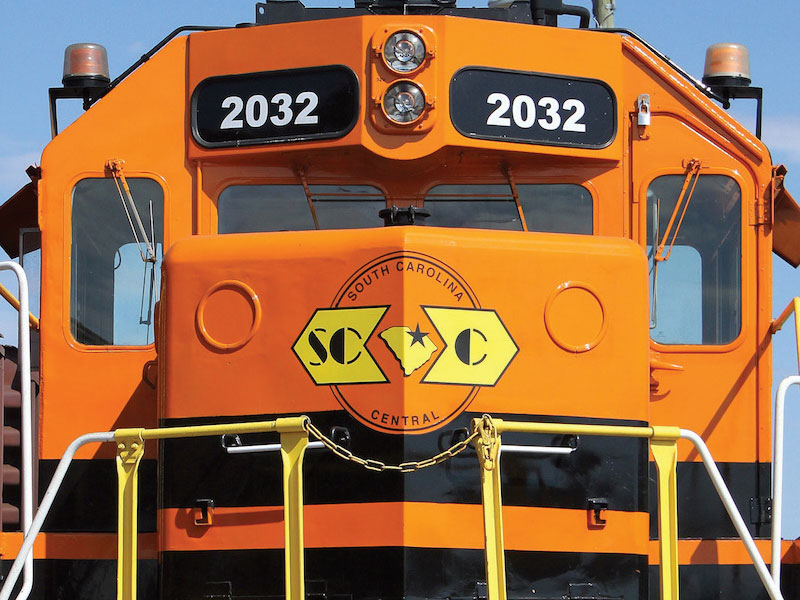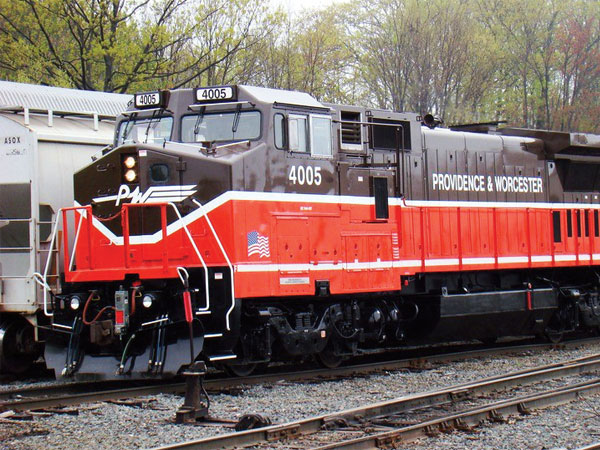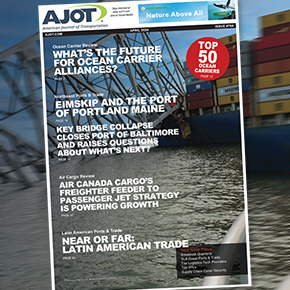When we think of intermodal rail, we envision containers or breakbulk cargo moving via one of our tier 1 carriers such as the U.P. or the CSX. We tend to forget that many more commodities begin or end their transit via short line railroads. You might find it interesting that there are 550 short line railroads operating in the U.S. representing 31% of our total rail freight mileage.
Regional Powerhouses
If we think of our class 1 railroads as thoroughbreds, then short lines are the true workhorses of the industry. Whether pulling containers off an ocean terminal or coal from the Powder River Basin, short lines provide that first or last mile in the supply chain. According to the D.O.T., America moved 14,609 million tons of “over the road” freight in 2015. This included domestic and international imports and exports moving on our trucks and rails. They predict that by 2045 this number will increase to well over 22,850 million tons. With an increasing shortage of qualified drivers and an aging highway system, it’s becoming apparent that the railroads, and in particular the short lines, will have to play an increased role in domestic freight movement.
Small Footprint, Big Scope
While short lines individually don’t traverse as many miles as the majors, it might surprise you to learn that the collective trackage of several conglomerates rival even the big four ‘trans-continental” railroads (U.P., BN, CP, and CN). The Genesee & Western, for example, operates 115 short line railroads in 41 states covering 13,000 track miles. It operates in 40 major ports, provides rail-ferry services between the US and Mexico and is one of the largest contract coal carriers in the country. The G&W’s Rail Link division is the principal contract operator in the Powder River coal fields. The Powder River Basin produces about 33% of the coal mined in the U.S. and Rail Link provides coal loading services, mine site trains as well as switching, locomotive, and rail car inspections. Last year the firm loaded out over 235 hundred million tons of coal from the region. Outside of the U.S. the Genesee & Western holds 1,400 miles of track in Australia and owns and operates Freightliners, the second largest rail intermodal operator in the UK and Europe.

Iowa Pacific Holdings was formed in March of 2001 with the intent of purchasing small short line railroads valued at $10 million or less. Today the IPH and its subsidiary Permian Basin Railways operate 16 railroads from California to the interior of New York State. Their combined operations offer freight, passenger, and scenic rail services throughout the heartland of America. In 2008 the IPH also acquired short line operations and rail assets in the U.K. IPH’s founder Ed Ellis has as American Rail.com put it a particular affinity for the “Main Line of Mid-America”.
Anacostia Rail Holdings operates over 760 miles of track across six rail lines. From the Pacific Coast through the Gulf and Midwest to Long Island, Anacostia offers containerized handling, bulk, and breakbulk freight services. Ocean carriers and terminal operators in Southern California are most familiar with the Pacific Harbor line. The PHL in tandem with the U.P. and the BNSF serve as a vital link between the Alameda Corridor, So Cal’s rail gateway and the ports of LA and Long Beach. Here in the Northeast the New York and Atlantic operates over tracks belonging to the Long Island Railroad. Replacing hundreds of truck trips per day the NYA offers a valuable freight alternative for Long Island’s overcrowded urban environment.
So, What is a Short Line Railroad?
There are over 43,000 miles of Class II and Class III tracks operating in the Continental United States. These are defined as America’s short line railroads. Serving local markets across the country, they provide a critical link for buyers and suppliers moving freight regionally, or as interline partners with the major railroads. Smaller in stature than Class 1 carriers, who have operating revenues exceeding $430 million, the Surface Transportation Board defines short lines as follows: Class II regional railroads have revenues exceeding $37 million but less than $430 million. Generally spanning two or more states they provide transportation linked at one or both ends by Class I carriers. Class III railroads with annual revenues under $20 million typically serve a smaller number of cities and towns moving railcars for more than one railroad. In some cases, they were at one time, a branch of a larger carrier which split off to serve a niche market. Many Class III railroads have been absorbed by rail conglomerates like WATCO and the Genesee & Wyoming, who operate them independently or in conjunction with their other carriers. The top five commodities handled by short line railroads include: chemicals, container and trailer traffic, crushed stone, gravel and grain.
A Bright Future for Short Lines
The future of domestic transportation looks very good. The overall health of the economy combined with a rise in domestic freight provides a fertile ground for further expansion within multimodal markets. DAT Solutions, a leading spot freight marketplace and information provider, offers data and analytics for various truck platforms. They focus on dry van, reefer, and flatbed services. DAT also analyzes rate trends for intermodal freight. Ms. Peggy Dorf, marketing analyst for DAT, advised that the average load-to-truck ratio for dry van freight January to August 2018 was 7.6 to 1, up 92% from the same period last year. This indicates an increase in demand for domestic transportation on the spot market, while carriers are being more selective about the freight they haul. Electronic Logging Devices and driver shortages in various markets contribute to pressure on truck capacity. Crane’s New York noted that domestic freight is anticipated to grow by 40% over the next 30 years.





